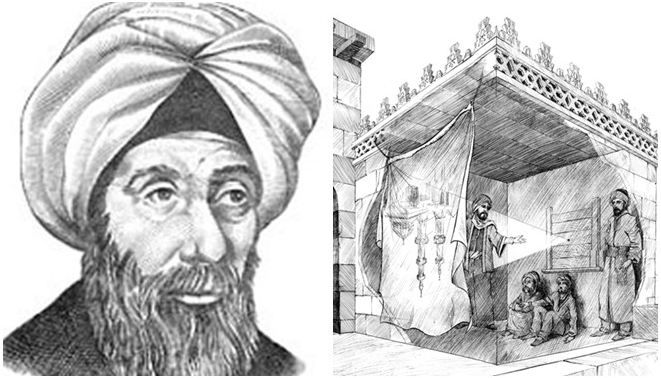
Talking about historical figures, we cannot ignore the name Ibn Haitham or known as Alhazen.
He was one of the Islamic scientists who had a great influence on modern science. Mathematician, astronomer, philosopher, and physicist. Alhazen scientist who lived in the Islamic Golden Age.
Ibn Haitham's most influential work in the development of science is "Kitab Al-Manazir", or "Book of Optics" which he wrote around 1011-1021. Thanks to his explanations of light and the human eye in this book, he is considered the "Father of Optics".
Ibn Haitham became famous for his extensive knowledge of mathematics. In a dark room while he was being held captive, Ibn Haitham saw light penetrate from a small hole into his room. He could see the shadows of objects outside that were illuminated by the incoming sunlight.
Born as a person who always wants to gain new knowledge, he then carried out various experiments on his own and came to the conclusion that light travels in a straight line, and vision occurs when straight light enters the eye.
Ibn Haitham's explanation is considered something very new, because Ancient Greek scientists such as Euclid and Klaudius Ptolemaeus previously stated that light comes out of the human eye, which allows us to finally see an object.
In his book, Ibn Haitham not only discusses the theory of light and color, he also explains the anatomy of the human eye and the human process in perceiving an object.
Ibn Haitham's understanding of light and the eye which he wrote in a book containing seven books was later translated into Latin by an unknown person. His knowledge was eventually passed on to other scientists so that he is considered the "Father of Optics".
UNESCO celebrated Ibn Haitham as one of the founders of modern optics at the "International Year of Light" international conference in 2015, where they discussed Ibn Haitham's scientific legacy, the history of optics, and the future of light-based technologies.
Ibn Haitham's influence on science was not only about optics, his theoretical solutions to Ancient Greek scientists are also considered the beginning of the "scientific method", that is, the method used to test theories by conducting experiments.
In addition, his great contribution to the development of science made him one of the figures who used to name a crater on the moon, namely Alhazen Crater.
Thanks to @blurtart for hosting this interesting contest.
Original Photo
Source: nusakini.com


Article source: nusakini.com
Congratulations, your post has been curated by @r2cornell-curate. Also, find us on Discord
Felicitaciones, su publication ha sido votado por @r2cornell-curate. También, encuéntranos en Discord
Thank you @r2cornell-curate and @abiga554
for the curation.
Congratulations, your post has been curated by @techclub
Manually curated by @samhenrytenplus
Thank you @techclub and @samhenrytenplus for the curation.